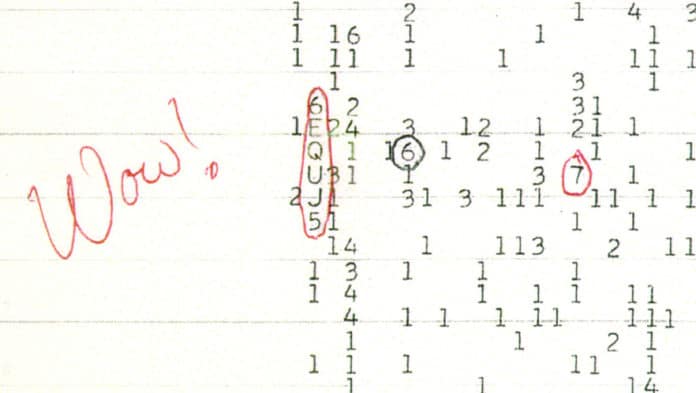On August 15, 1977, the Ohio State University’s Big Ear radio telescope in the United States detected the famous ‘Wow!’ signal. Since then, the signal has been used as support to search for alien life.
The entire signal sequence lasted for the full 72-second. Many hypotheses have been advanced on the origin of the emission, including natural and human-made sources, but none adequately explain the signal.
Now, after almost 45 years, scientists have pinpointed the source of this alien signal. Scientists suggest that the mysterious signal may have come from a sun-like star located 1,800 light-years away in the constellation Sagittarius.
Alberto Caballero, an amateur astronomer, told Live Science, “The Wow! Signal is considered the best SETI candidate radio signal that we have picked up with our telescopes.”
“It most likely came from some natural event and not aliens.”
According to astronomers, the signal may be generated by a passing comet.
Caballero checked a catalog of stars from the European Space Agency’s Gaia satellite for probable possibilities after learning that the Big Ear telescope’s two receivers were pointing toward the constellation Sagittarius on the night of the Wow! Signal.
Caballero said, “I found specifically one sun-like star, an object designated 2MASS 19281982-2640123 about 1,800 light-years away with a temperature, diameter, and luminosity almost identical to our stellar companion.”
Another two candidate stars have a luminosity error interval that includes the luminosity of the Sun, and 14 candidates more are also identified as potential Sun-like stars. Still, the estimations on their luminosity were unknown.
Caballero focused on sun-like stars because “we’re looking for life as we know it,” he said. It could be a good idea to search [the star] for habitable planets and even civilizations.
Journal Reference:
- Alberto Caballero. An approximation to determine the source of the WOW! Signal. DOI: 10.1017/S1473550422000015
